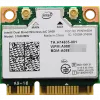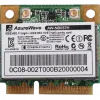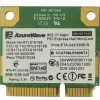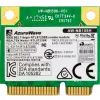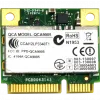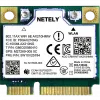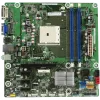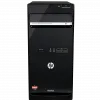PCI Express Mini Card
PCI Express Mini Card (also known as Mini PCI Express, Mini PCIe, Mini PCI-E, mPCIe, and PEM), based on PCI Express, is a replacement for the Mini PCI form factor. It is developed by the PCI-SIG. The host device supports both PCI Express and USB 2.0 connectivity, and each card may use either standard. Most laptop computers built after 2005 use PCI Express for expansion cards; however, as of 2015, many vendors are moving toward using the newer M.2 form factor for this purpose.
Due to different dimensions, PCI Express Mini Cards are not physically compatible with standard full-size PCI Express slots; however, passive adapters exist that allow them to be used in full-size slots.
Physical dimensions
Dimensions of PCI Express Mini Cards are 30 × 50.95 mm (width × length) for a Full Mini Card. There is a 52-pin edge connector, consisting of two staggered rows on a 0.8 mm pitch. Each row has eight contacts, a gap equivalent to four contacts, then a further 18 contacts. Boards have a thickness of 1.0 mm, excluding the components. A "Half Mini Card" (sometimes abbreviated as HMC) is also specified, having approximately half the physical length of 26.8 mm.
Electrical interface
PCI Express Mini Card edge connectors provide multiple connections and buses:
- PCI Express ×1
- USB 2.0
- SMBus
- Wires to diagnostics LEDs for wireless network (i.e., Wi-Fi) status on computer's chassis
- SIM card for GSM and WCDMA applications (UIM signals on spec.).
- Future extension for another PCIe lane
- 1.5 V and 3.3 V power
